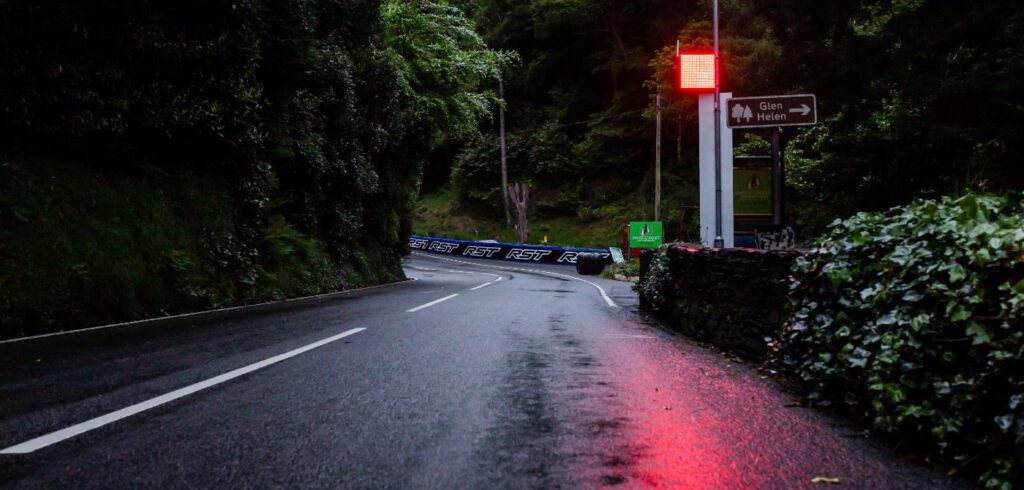The Isle of Man TT is to introduce a digital flag panel and marshalling system, similar to those used in F1 and IndyCar (among other series) for the first time this year, in an effort to further enhance safety at the event.
Provided by EM Motorsport, the introduction of the FIA/FIM-homologated T3 Digital Flag Panel will increase marshal-to-rider communication along the iconic Manx course. A total of 31 light panels will be placed across the various sections of the course. Flag codes and information from the local marshal teams and the race director will be displayed for all five competition classes: Superbike, Supersport, Superstock, Supertwin and Sidecar. The system will also relay the information to each rider’s dashboard, giving clear indication of any incidents ahead via GPS, as it does in the British Superbike Championship as of this year.
Paul Phillips, TT business development manager, Isle of Man TT Races, said, “There has been a raft of changes to the Isle of Man TT Races for 2022, one of the biggest changes is the introduction of a new Safety Management System, the aim of which is to reduce the risk of an accident. The Digital Red Flag System is a welcome addition to the TT as part of this system and won’t replace the important role our marshals play: they are in addition to a human waving a flag. The technology of the flag system means that with a push of a button, the clerk of the course can immediately bring the racing to a stop; every single competitor, no matter where they are on the course.”
Each 50 x 50cm screen has more than 3,000 LEDs inside and can be seen from a kilometer away. A viewing angle of up to 70° ensures the riders will always be able to see any message displayed. The panels offer the additional bonus that marshals can be placed in safer locations and react more quickly to an incident, reaching a bike or rider that requires assistance in less time.
With the increase in digital technology, EM Motorsport and the event organizers have ensured its implementation will be sustainable. As a result, 90% of the panels around the 37.7-mile mountain course are powered by renewable energy, with solar power used to recharge the batteries. The majority will also be mounted to existing street poles to cause minimum additional preparation for the event. The panels will also be in use for the Manx Grand Prix in August.



